Queen Elizabeth II's Coronation: All the Details
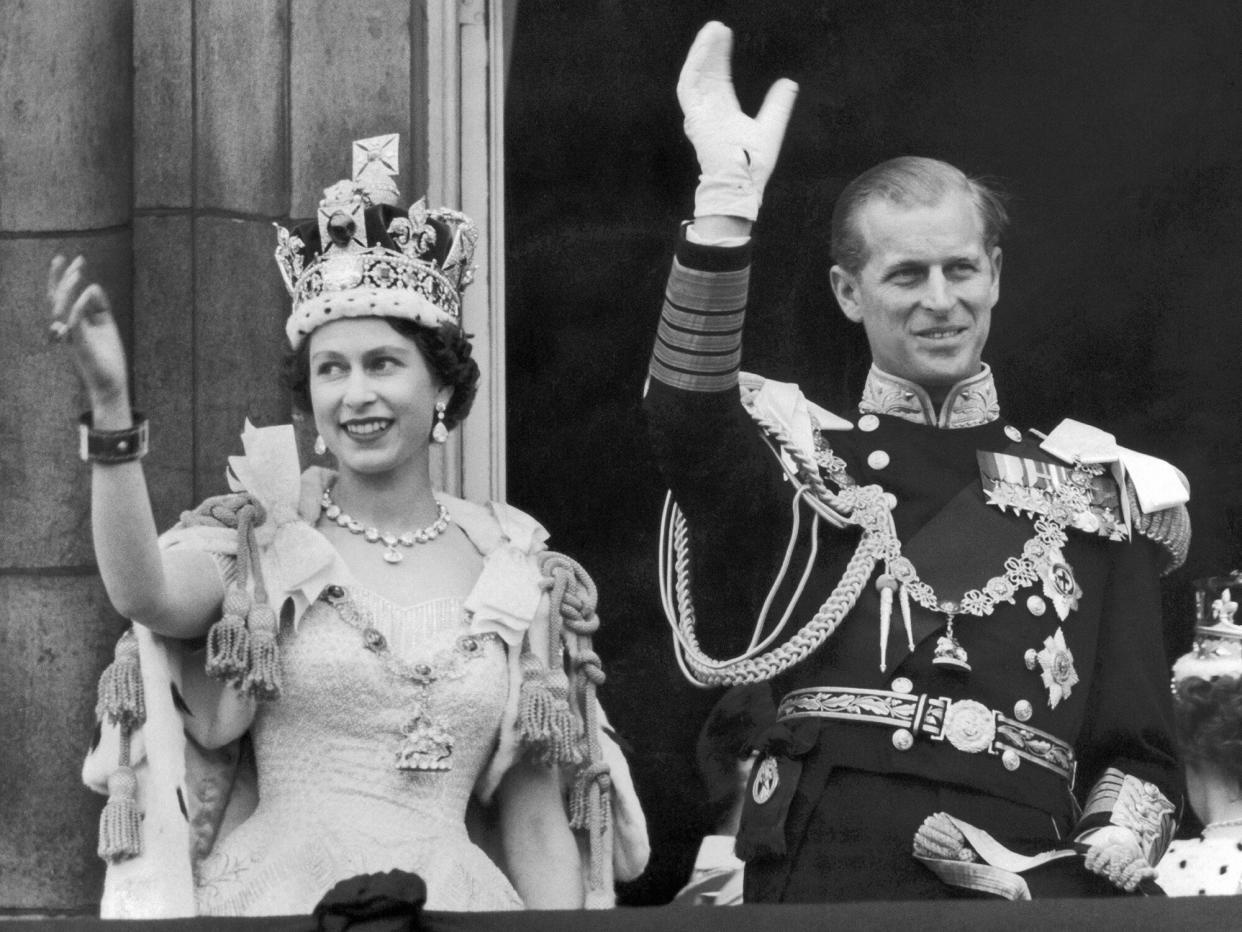
Keystone-France/Gamma-Keystone
Elizabeth Alexandra Mary Windsor became Queen Elizabeth following the sudden death of her father, King George VI, in February 1952. Due to the unexpected nature of the King's death, the Queen's coronation was delayed by more than a year. She was officially crowned on June 2, 1953, in front of 27 million viewers who watched by television, 11 million who tuned in via radio and 8,000 distinguished guests who attended in person.
As might be expected for such a momentous event, the coronation required detailed planning for everything from how the Queen would arrive (in a horse-drawn gold carriage) to what she would wear (a gorgeous gown that she had a hands-on role in designing) and to who would attend (then-4-year-old Prince Charles received a hand-painted invitation to the ceremony).
Here is a look at the coronation of Queen Elizabeth in 1953.
Queen Elizabeth II's Coronation Date and Venue
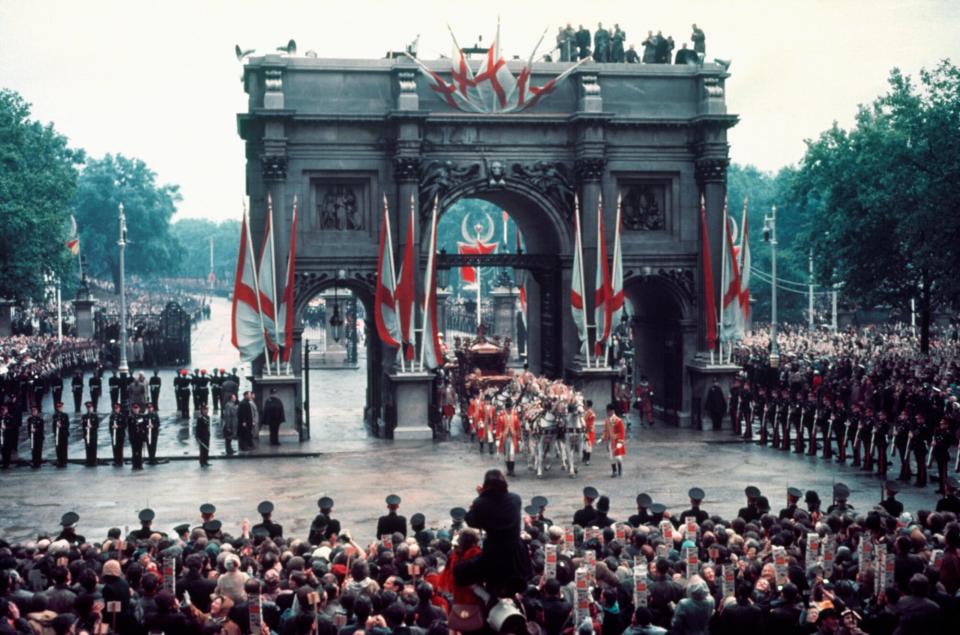
Hulton-Deutsch Collection/CORBIS/Corbis
Queen Elizabeth ascended the throne following the unexpected death of her father, King George VI, on Feb. 6, 1952. Because no one had any idea that she would be crowned only 16 years after her father, planning Queen Elizabeth's coronation took time.
The coronation was held on June 2, 1953 — a full year after her father's passing — at Westminster Abbey.
Prince Philip played an instrumental part in planning the occasion, chairing the Coronation Committee, which was one of two committees created to organize the event.
Queen Elizabeth II's Coronation Carriage
On her Coronation Day, the Queen traveled in a golden horse-drawn carriage. But despite the vehicle's opulence, Queen Elizabeth herself later called the transportation "horrible," before explaining, "It's only sprung on a lever. Not very comfortable."
For more on Queen Elizabeth, listen below to our daily podcast PEOPLE Every Day.
Three million people lined the streets to see Queen Elizabeth make her way through London in the gilded carriage.
Queen Elizabeth II's Coronation Gown
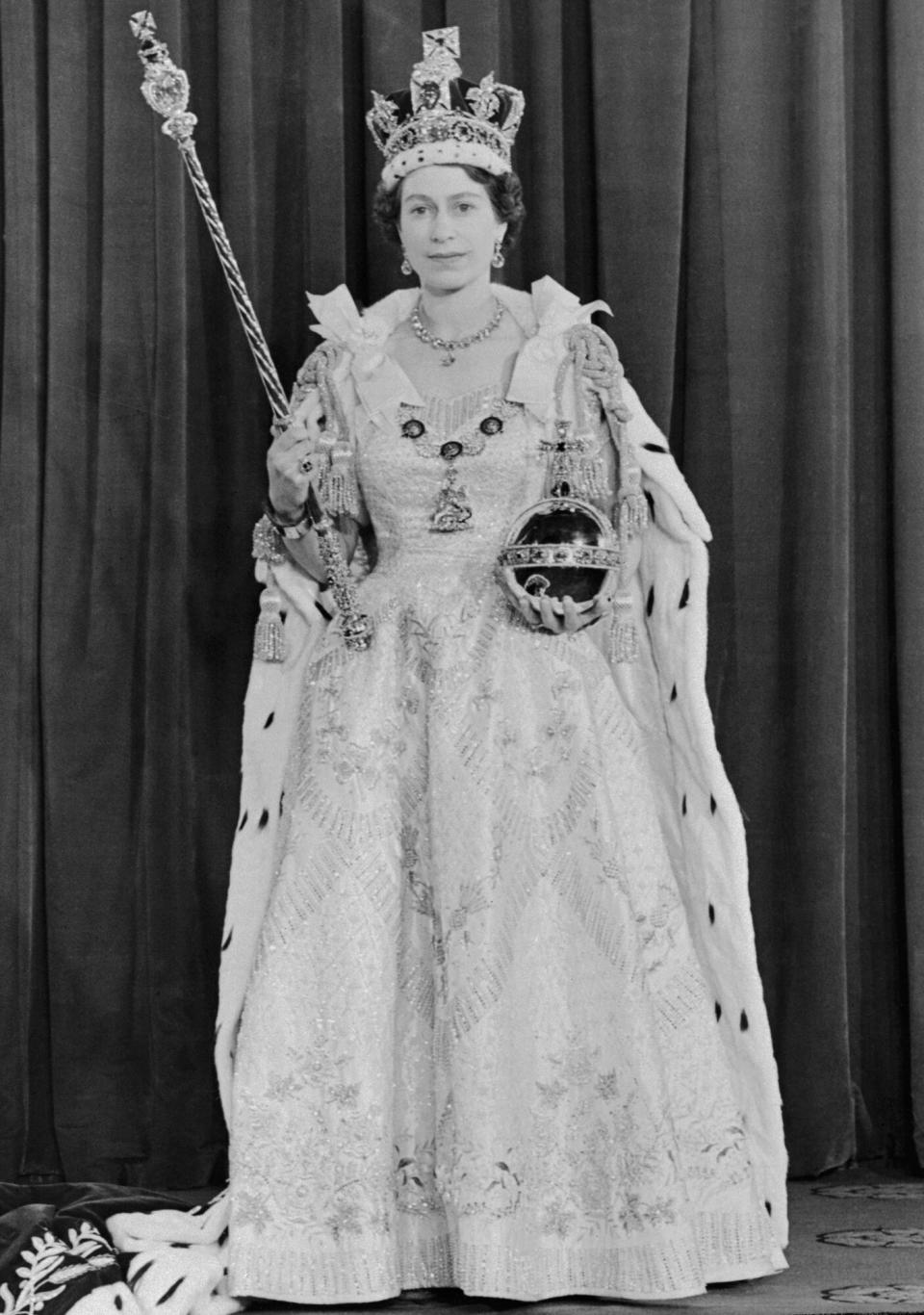
Bettmann
Queen Elizabeth played a large role in the design of the gown she wore to the event. The white duchess satin dress was created by Sir Norman Hartnell (the same designer who made her 1947 wedding gown) and included several personal touches requested by the Queen herself like embroidered flowers that represented the United Kingdom as well as countries from throughout the Commonwealth, which at that time included Australia, New Zealand and Pakistan.
Hartnell also stitched a four-leaf shamrock for good luck on the left side of the skirt, placed precisely where Queen Elizabeth's hand would fall during the ceremony. Additionally, the dress was threaded with leeks, the symbol of Wales. As Caroline de Gautaut, deputy surveyor of the Queen's Works of Art, told PEOPLE, "Back then, the Earl Marshall, who was in charge of everything to do with the protocols of the coronation, was adamant that the leek was the leading emblem of Wales — it does look very beautiful."
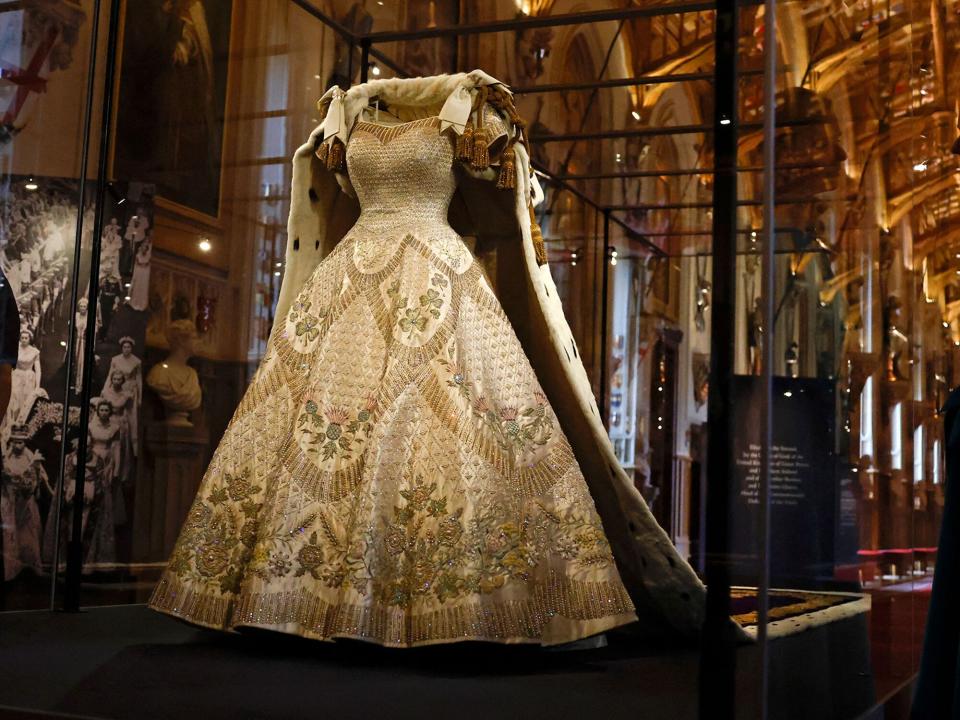
CARLOS JASSO/AFP
The gown was only publicly displayed three times during the Queen's lifetime, most recently during the Platinum Jubilee in 2022. As de Gautaut explained to PEOPLE, "It's probably one of the most important dresses made in the 20th century — certainly a great piece of British design. The combination of rich fabrics and beautiful embroideries was really Hartnell's absolute signature and I think the greatest expression of all his career."
Queen Elizabeth's shoes were also special. The ornate shoes, which were designed by French shoemaker Roger Vivier and British shoemakers Delman Ltd, were said to have been inspired by the Chartres Cathedral in France. The royal heels were gilded in gold and covered in rubies, making them truly fit for royalty.
Queen Elizabeth II's Coronation Regalia
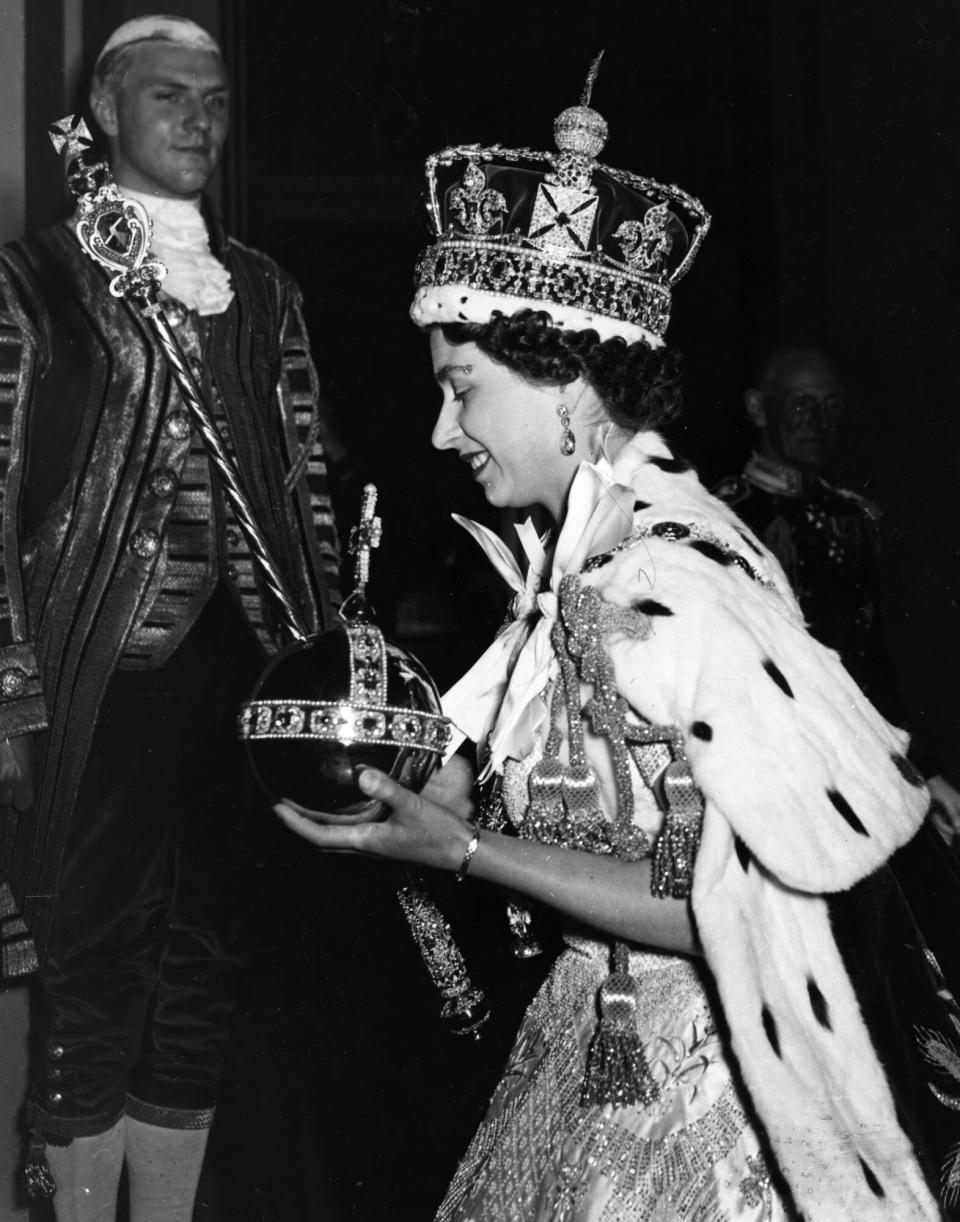
Hulton Archive/Getty
The Queen wore two crowns on her Coronation Day: the St. Edward's Crown and the Imperial State Crown.
According to the Historic Royal Palace's website, the St. Edward's Crown is "the most important and sacred of all the crowns" and "is only used at the moment of crowning itself." Originally made for the coronation of King Charles II in 1661, the crown weighs nearly 5 lbs and is encrusted with semi-precious stones.
For her departure from Westminster Abbey, the freshly-coronated Queen Elizabeth replaced the St. Edward's Crown with the lighter 3 lb. Imperial State Crown, which is made of gold and features diamonds, sapphires, emeralds, pearls and rubies.
Other pieces of the Coronation Regalia (which are part of the Crown Jewels collection) were also used during the coronation, including, the Sovereign's Sceptre with Cross, the Sovereign's Orb and the Coronation Spoon.
As coronation expert Alastair Bruce told PEOPLE, the Jewels themselves are well-known, but their importance is often misunderstood. He said, "The Crown Jewels include 'The Regalia,' which are used at a coronation when the monarch is invested with the best known, if least understood, symbols of this kingdom."
Bruce continued, "Post boxes, police helmets, income tax returns and almost every visual expression of the United Kingdom displays a Crown and Orb. The meaning of each of the key objects has evolved from emblems of authority that date way back before the Saxons arrived. Yet there is an enduring relevance to modern leadership wrapped into each symbol that express values of humility, duty and service, while representing total power. Discovering their meaning helps to define what the Sovereign is to the Crown and how that Crown is the property of us all, in the constitutional function of Monarchy."
Queen Elizabeth II's Coronation Broadcast
The event was a major one in the life of Queen Elizabeth and in the history of the United Kingdom as a whole. This was the first televised coronation, a fact that popularized the medium in the country. Up to that point, many considered television "radio's weaker brother," but allowing millions of people to enjoy such a momentous event changed that.
Nearly 27 million people in Britain watched the events as they unfolded. They were joined by another 11 million who tuned in to hear what was arguably the most important part of the day: the Queen's coronation speech.
Queen Elizabeth II's Coronation Speech
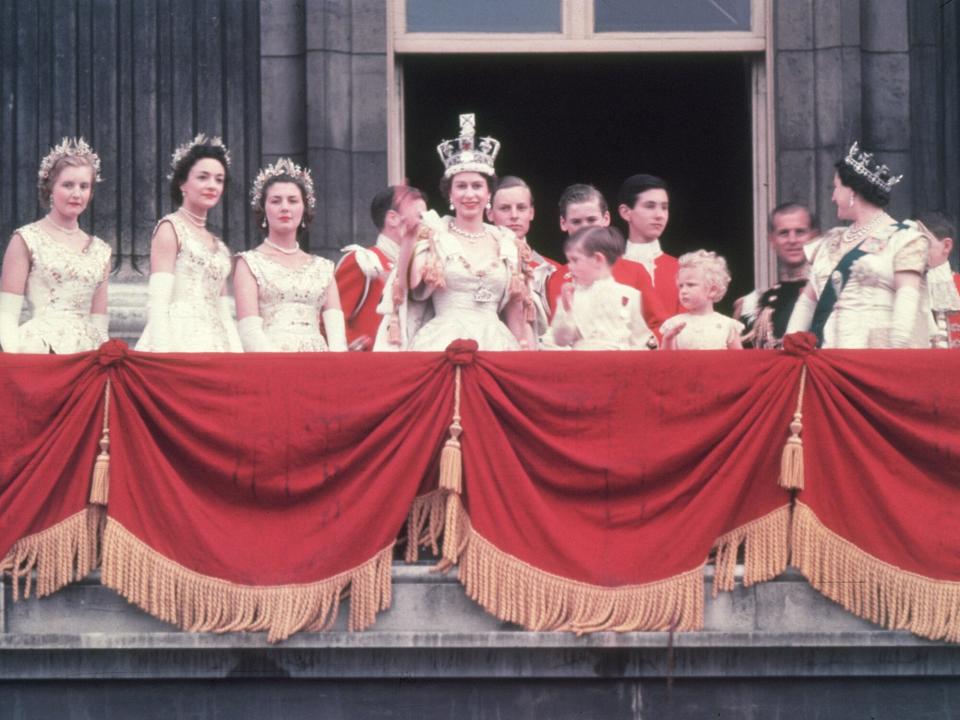
Hulton Archive/Getty
In her speech, Queen Elizabeth spoke to the millions of people who were watching and listening. She said in part, "I have behind me not only the splendid traditions and the annals of more than a thousand years but the living strength and majesty of the Commonwealth and Empire; of societies old and new; of lands and races different in history and origins but all, by God's Will, united in spirit and in aim."
"Therefore I am sure that this, my Coronation, is not the symbol of a power and a splendor that are gone but a declaration of our hopes for the future, and for the years I may, by God's Grace and Mercy, be given to reign and serve you as your Queen."
Queen Elizabeth's Coronation Attendees
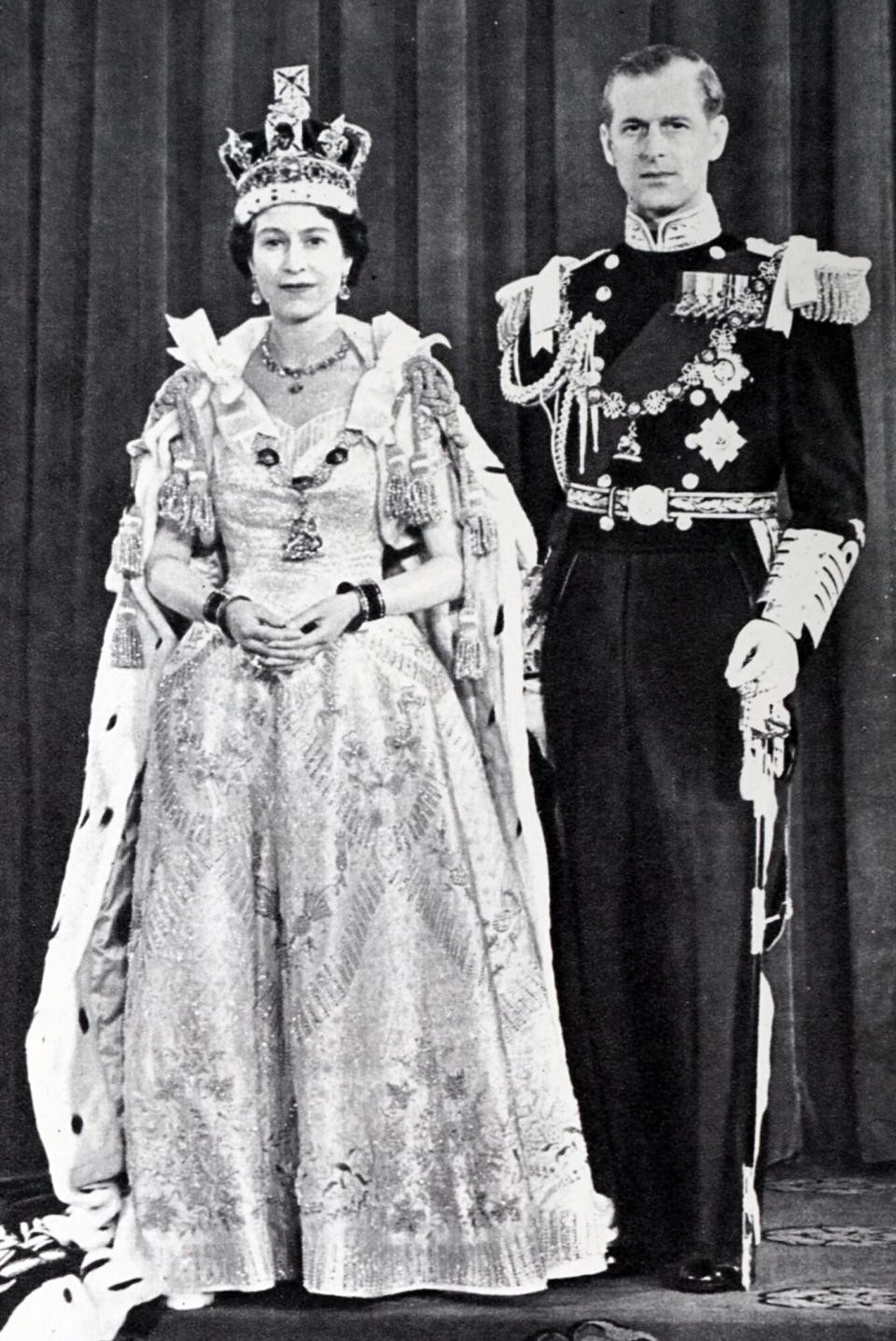
Universal History Archive/Universal Images Group
Roughly 8,000 guests were invited to attend the coronation ceremony in person. Among these guests were Queen Elizabeth's husband, Prince Philip, and her son, Prince Charles.
While he was not crowned alongside his wife, Prince Philip still enjoyed the royal treatment during the coronation. He was outfitted in a luxurious ermine-trimmed red robe, under which he wore his Admiral of the Fleet uniform. The Duke of Edinburgh was also the first person to pay homage to the new monarch following the Archbishop of Canterbury.
Prince Charles, who was 4 years old at the time, was the first heir apparent to ever attend such an event. He had received his own hand-painted invitation to the ceremony, one that was specifically designed with the young boy in mind. Decorated with British guards playing instruments and cartoon animals, the invitation read, "By Command of The Queen the Earl Marshal is directed to invite His Royal Highness Prince Charles to the Coronation." However, Charles was photographed appearing intermittently enthused and bored by the day's events.

 Yahoo News
Yahoo News 
